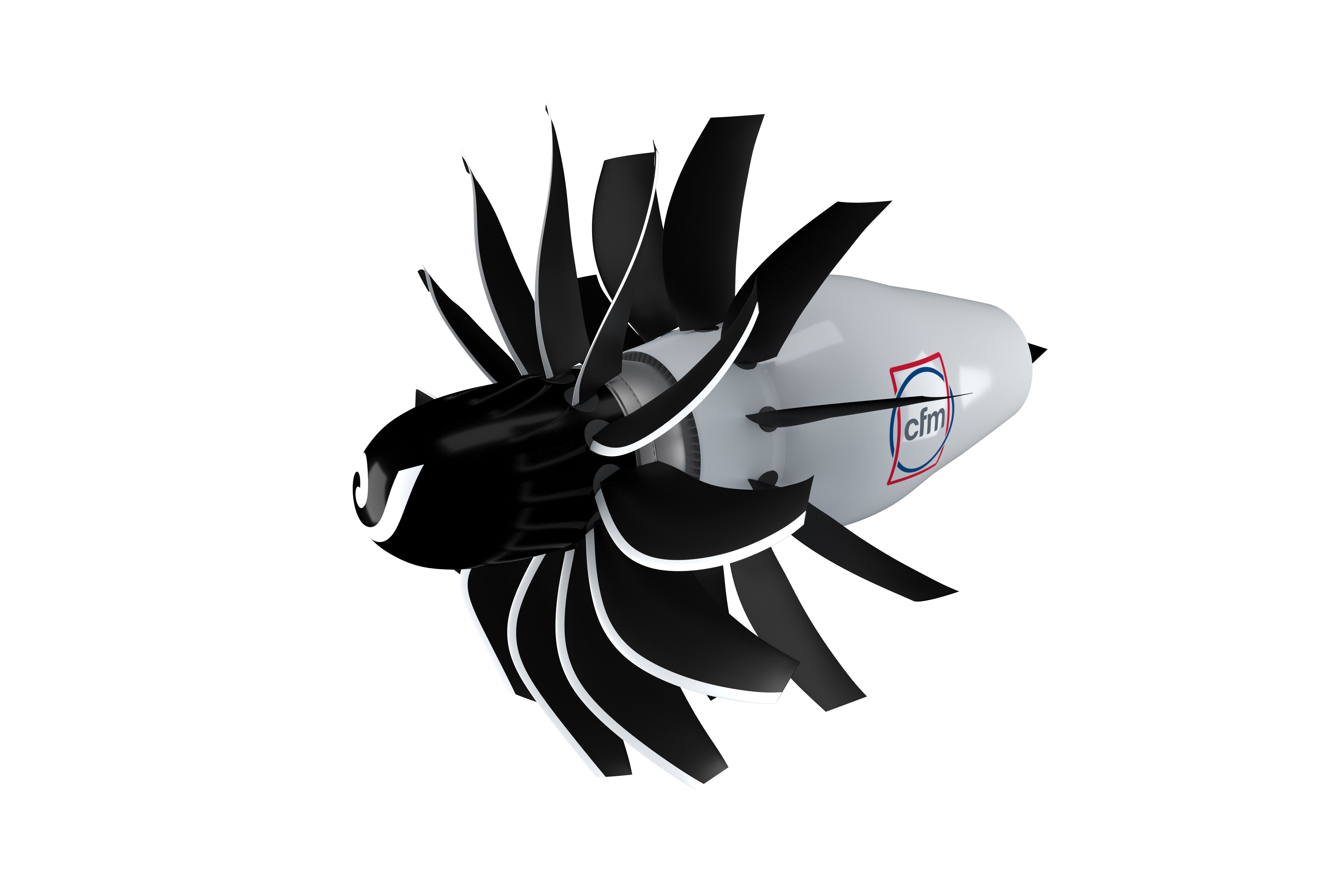GE Aerospace Teams Up to Simulate, Model Open Fan Engine on Aircraft Wing
DOE awarded GE Aerospace, Boeing, and NASA supercomputer access to study open-fan aerodynamics to reduce drag and improve fuel efficiency.
GE Aerospace, Boeing, NASA, and the Oak Ridge National Laboratory will develop an Open Fan engine design model. Engineers will simulate flight conditions to study the aerodynamics of a wing-mounted Open Fan engine. Simulation enables the design to achieve more efficiency, increased performance benefits, and lower noise levels. x
The Department of Energy awarded this project 840,000 supercomputing hours via its INCITE program, which supports computationally intensive projects. The partners have access to Argonne National Laboratory’s Aurora supercomputer and Oak Ridge National Laboratory’s Frontier supercomputer, both capable of processing test data at over a quintillion calculations per second.
Open Fan Engine
Open Fan designs lack the traditional jet engine casing, permitting a larger fan size with reduced drag and improved fuel efficiency. Previously, GE Aerospace modeled the performance and noise levels of Open Fan engine parts with exascale computing. Increased computational power allows the replication of a full-size integrated engine and aircraft in the design phase.
“Advanced supercomputing capability is a key breakthrough enabling the Open Fan engine design,” said Arjan Hegeman, General Manager for Future of Flight Technology at GE Aerospace. “Airplane integration is critical. Today’s announcement with Boeing, NASA, and Oak Ridge National Laboratory to simulate the latest airplane and engine designs continues a longstanding legacy in the aviation industry.”
CFM Open Fan engine; image credit: GE Aerospace

GE Aerospace’s CFM RISE
CFM International’s Revolutionary Innovation for Sustainable Engines (RISE) program, launched in 2021 and developing the Open Fan engine, demonstrates aviation technology and completed more than 250 tests. The RISE program develops advanced engine architectures and compact core and hybrid electric systems for compatibility with 100% or unblended sustainable aviation fuel. It also:
- Targets more than 20% improved fuel efficiency
- 20% lower CO2 emissions over modern commercial engines
- Obtained more than 900 engineers in 2024
“We aim to do something our company has never achieved before — introduce a new jet engine that is 20% more fuel efficient than our most advanced commercial engines today,” said Hegeman. “This represents a jump in technology development that usually takes multiple generations to achieve. Supercomputing helps make it possible.”
More News
In early November, GE Aerospace signed a maintenance, repair, and offload (MRO) offload agreement with the Cyprus-based United Aerospace Maintenance Co. (UAMCO). The contract will quicken the work scopes for CFM LEAP engines and allow GE Aerospace to satisfy its MRO capacity and open ecosystem obligations for CFM. The ecosystem includes:
- CFM internal capacity delivered by GE Aerospace and Safran Aircraft Engines
- External capacity from Premier MRO workshops
- External capacity from competing third-party MRO providers
Headquartered in Larnaca, Cyprus, UAMCO obtained EASA approval for quick-turn maintenance for LEAP-1A engines installed on Airbus A320neo fleets. The company also received MRO approval for LEAP-1B engines equipped on Boeing 737 MAX aircraft. UAMCO will fulfill the engine maintenance requirements of customers in Europe, the Middle East, and Africa. Currently, the company is partnered with GE Aerospace On-Wing Support to perform on-wing and near-wing retrofits for the updated reverse bleed system in LEAP-1A engines. UAMCO employs two teams that can perform installations globally.